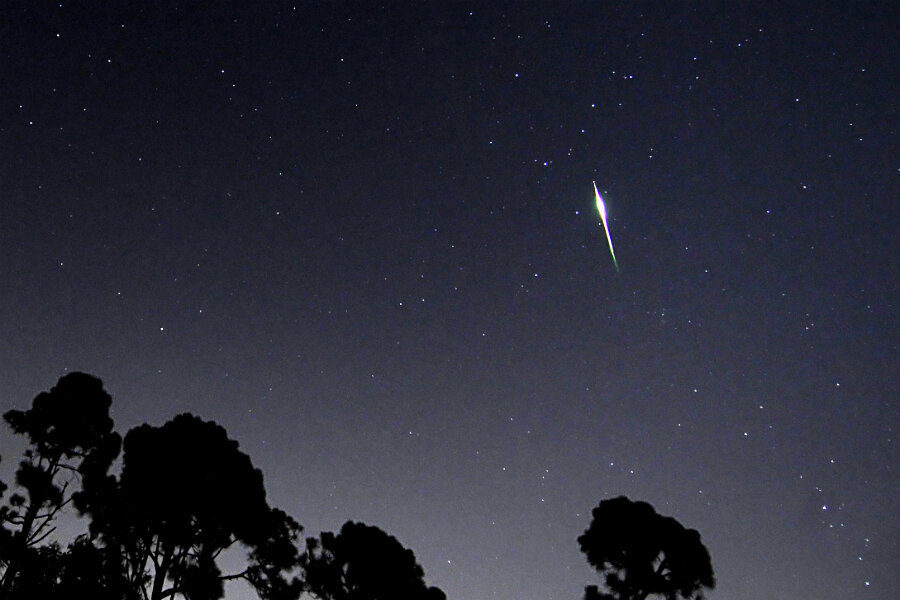How to watch the Draconid meteor shower
Loading...
It's meteor season, and the Draconid showers are coming.
Beginning in the evening of Oct. 8 and continuing through Oct. 9, the Draconid meteor shower will peak with an estimated 10 to 20 meteors per hour, according to NASA.
Historically, the Draconid shower produces only a few shooting stars per hour. But some years, such as 2012, viewers recorded up to a thousand meteors per hour, National Geographic reports.
The Draconids, which derives its name from the constellation Draco the dragon, occurs when the Earth’s orbit crosses path with that of Comet 21P/Giacobini-Zinner, according to science blog EarthSky. The comet was discovered in 1990 by Michael Giacobini, so the shower is sometimes called the Giacobinids.
According to Cometography, a site maintained by astronomer Gary W. Kronk, 21P/Giacobini-Zinner "experienced seven close approaches to Earth and two close approaches to Jupiter during the 20th century. It will make two close approaches to Earth and one close approach to Jupiter during the first half of the 21st century."
If you want to see the meteor shower this Thursday or Friday evening, find a spot as far away from city lights as possible and recline in a lawn chair. Be prepared to spend a few hours looking north for the showers. Binoculars and telescopes are not needed, as meteors travel unpredictably and typically are only visible for a couple of seconds.
With no full moon, the dark skies will provide a stage for excellent views of the meteor.
Since Draco is located so far up in the northern sky, stargazers in the Northern Hemisphere, particularly the United States, Canada, Europe, and northern Asia are expected to have front row seats.
According to AccuWeather meteorologist Jordan Root, “showers, thunderstorms, and clouds will impact viewing conditions from the Great Lakes region to northern New England and part of the central Plains.”
Mark your calendar and enjoy the show! If you miss the Draconids, don't worry – a second meteor shower, the Orionid, is expected to occur before dawn on Oct. 22.







